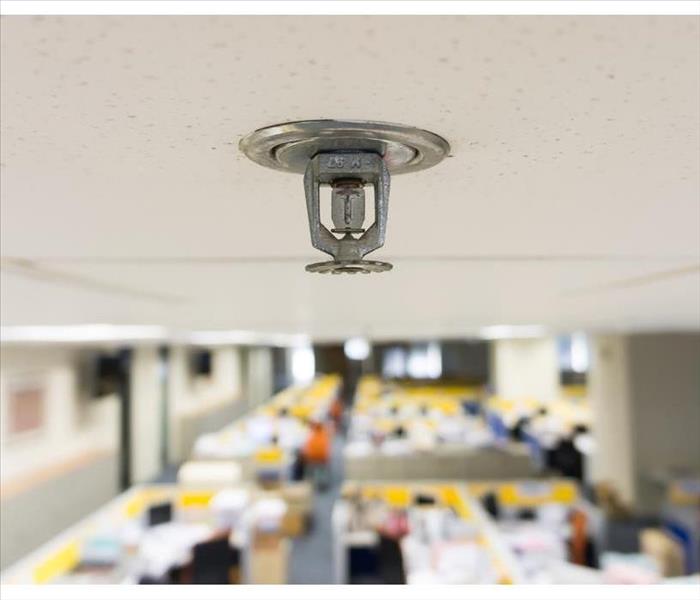Commercial Fire Sprinkler Maintenance
10/29/2021 (Permalink)
Commercial Fire Sprinkler Maintenance
A commercial fire sprinkler system is one of the best ways to prevent injuries, save lives and decrease damage to property. That’s why it’s important to keep up on regular maintenance and ensure that your fire suppression system is working properly. The National Fire Protection Association (NFPA), recommends the following schedules for inspection and testing.
Inspection
• Weekly to monthly: In most systems, sprinkler gauges should be visually inspected weekly. Gauges in wet pipe systems should be checked monthly.
• Quarterly: Alarm instruments associated with water flow detectors and valve supervisory switches should be checked every three months. Hydraulic nameplates, control valves and supervisory signals should also be examined.
• Annually: All pipes and fittings, in addition to spare sprinklers, should be inspected. Seismic and hanger bracing systems, as well as hydraulic nameplates, should be checked.
• Every five years: Sprinkler piping should be inspected internally. This inspection is important for preventing obstruction caused by foreign materials.
Testing
• Quarterly: Mechanical devices, such as water flow detectors, should be tested every three months. Waterflow switches should be tested.
• Semiannually: Pressure switches should be tested every six months to ensure setting accuracy. Vane switches should also be tested twice a year.
• Annually: Every 12 months, the entire fire sprinkler system should be tested. This should include testing of water flow, alarms and fire pumps. Antifreeze concentration should also be tested.
• Every five years: In harsh environments with extreme temperatures, sprinklers should be tested every five years. Gauges should also be tested or replaced.
• Every decade or more: Fire suppression systems using dry sprinklers should be tested every 10 years. Sprinklers using fast-response technology should be tested 20 years after installation and then every decade. Sprinklers using standard response systems need to be tested 50 years after installation, followed by 10-year intervals.
If you have the unfortunate experience of dealing with a commercial fire in Perry, OK, you may have some water damage from your fire sprinkler system. However, you can call a professional water and fire restoration service for fire sprinkler cleanup, which is preferable to the mess you could have if the fire department must use mass amounts of water to put out the fire.



 24/7 Emergency Service
24/7 Emergency Service
